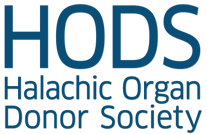Talmud on Brain-Stem Death
Rabbi Dr. Avraham Steinberg
Talmud on Brain-Stem Death
[6 minutes 37 seconds]
The Chief Rabbinate’s decision was that total, irreversible cessation of breathing is the moment of death for all purposes. This can be established by brain death criteria so that one can be sure that the entire brain including the brainstem is dead and non- functioning, and will never resume functioning, and therefore there will never be independent spontaneous breathing, and therefore the person is dead. This decision was primarily based on the sugya in Yuma from which it turns out that the only criterion to define the moment of death — the cessation of breathing – (and) the Talmud is based on the verse in the Bible. And although there is a dissenting opinion in the Talmud, if we look into the versions of this dissenting opinion in all the Rishonim on Yuma, we find the dissenting opinion is ta’bur , the navel which clearly indicates another way of checking breathing.
One way of checking breathing is through the nostrils and another way is by watching the diaphragm moving up and down which moves the navel. Only Rashi and the M’eiri have the “gersa” of the dissenting opinion, but one should take into account that the understanding of the function of the heart in those days was as the ancients understood: That the heart is pumping air and not blood, and actually the lungs are only a cooling mechanism of the heart, and the major respiratory function is through the heart. In other words, even according to the understanding that the dissenting opinion looks into the heart, it is another way to look into respiration. So that actually the sugya tells us that all opinions go according to respiration; it is only where you can look to check better the functioning respiration.
Be it as it may, all three Rishonim, the psak is according to the opinion in the Talmud that you check at the nostril, and that’s it; you don’t check the heart, neither for respiration as the old way of understanding, nor for heartbeat as we understand it; and therefore the Chief Rabbinate’s opinion, based on this sugya, assumed that if you can make a clear medical decision that the person is not breathing and it is an irreversible situation, this is the Talmudic definition of death.
The Chief Rabbinate also mentions a responsum by the Chatam Sofer, which is a complicated responsum, and can be understood in two ways. An understanding of the Chief Rabbinate was clearly that the Chatam Sofer also went according to the understanding that breathing is the important sign although occasionally you need verification by other signs such as the heart.
The Chief Rabbinate also mentions a responsum from Rav Moshe Feinstein, and as we well know today, there is some misunderstanding in the position of Rav Feinstein because there are three different responsa on the matter of death and transplant. Out of two, it seems as if Rav Moshe was opposed to brain death, but one tshuva clearly points to the fact that breathing is the only criterion. And the Chief Rabbinate’s understanding even then was that this was Rav Feinstein’s opinion which was verified both by Rav Feinstein himself later in the years when he was asked about his seeming contradicting opinion, and he clarified that the heart does not make any, is not of any importance in defining the moment of death according to his opinion.
So was also the opinion of his son Rav Dovid Feinstein, that understood that his father relied only on breathing, and so is the understanding of his son-in-law Rav Moshe Tendler.
The Chief Rabbinate’s decision obviously was an independent decision; this was their understanding of the definition of death. And they also relied on Rav Moshe Feinstein’s understanding according to their viewpoint.
Subsequently, the Ministry of Health in Israel was happy to accept the landmark decision of the Chief Rabbinate that brain death is the moment of death. However, they refused to accept some qualifications that the Chief Rabbinate asked to add to this definition which was aimed at verifying that there are no mistakes, that it’s really an irreversible diagnosis and that the physicians can be relied upon that they are doing the right thing.
It took 17 years for the Health Ministry to accept all these qualifications of the Chief Rabbinate and currently it is going to be published as the new norm of the medical definition of brain death according to the Ministry of Health, which will be according to the requirements of the Chief Rabbinate. And obviously the halachic perspective of it is by the Chief Rabbinate that did accept brain death and the cessation of respiration as the moment of death.
